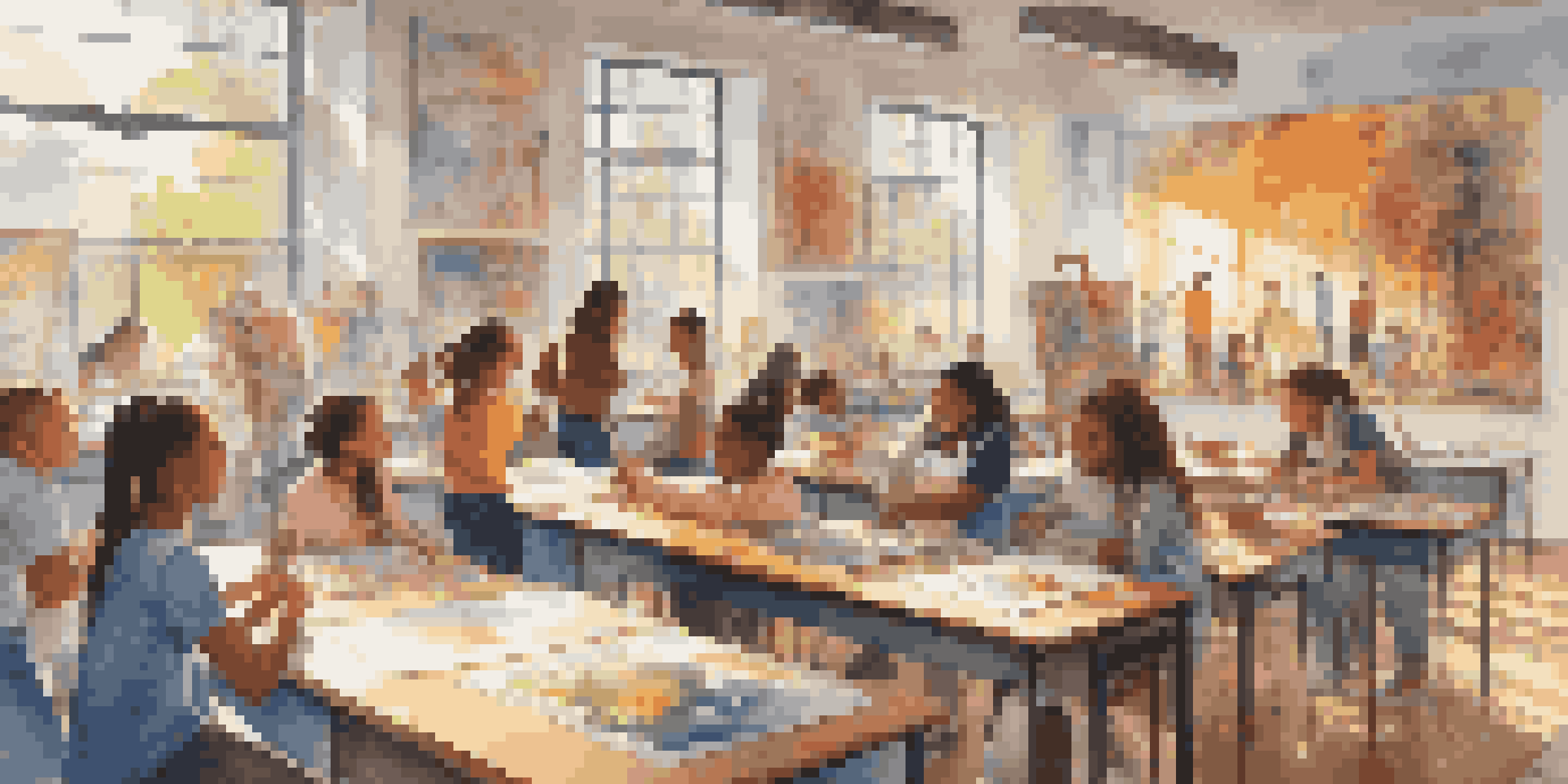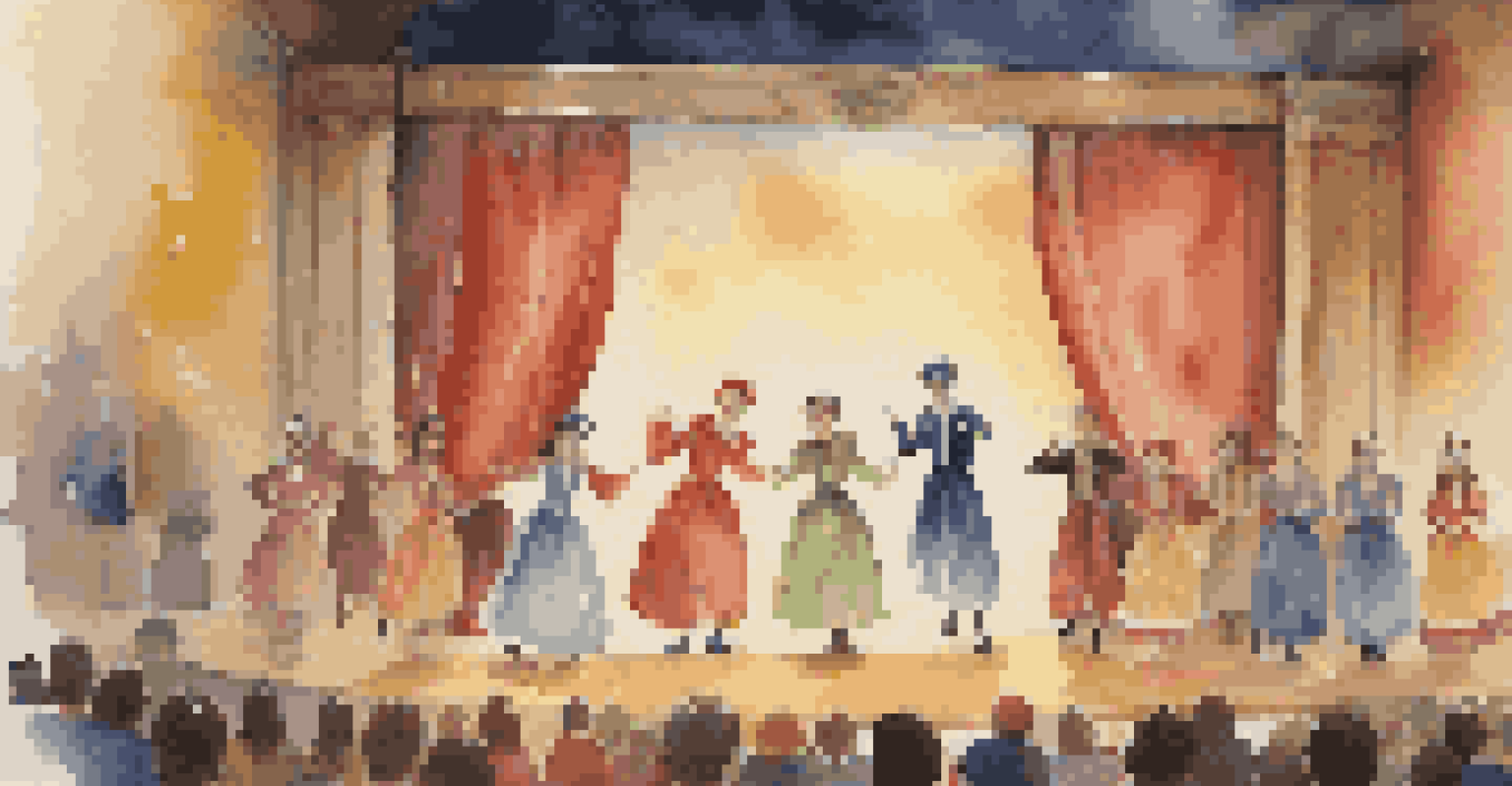Fostering Resilience through Arts Education in Schools

Understanding Resilience and Its Importance in Education
Resilience is the ability to bounce back from setbacks, adapt to change, and keep going despite challenges. In an educational context, fostering resilience is crucial for students, as it equips them with the skills needed to navigate both academic and personal hurdles. It’s not just about surviving tough times; it's about thriving in the face of adversity and becoming stronger.
Resilience is the capacity to recover quickly from difficulties; toughness.
When students develop resilience, they tend to perform better academically and emotionally. They become more engaged in their learning, take on challenges with a positive mindset, and learn to view failures as opportunities for growth. This foundation is essential for lifelong success, both in and out of the classroom.
One effective way to nurture resilience in students is through arts education. Engaging in creative activities allows students to express themselves, explore their emotions, and develop coping mechanisms. As they navigate the creative process, they learn valuable lessons about perseverance and self-discovery.
The Role of Arts Education in Enhancing Emotional Intelligence
Arts education plays a significant role in enhancing emotional intelligence, which is crucial for resilience. By participating in activities like painting, music, or drama, students learn to identify and articulate their feelings. This process not only helps them understand their own emotions but also fosters empathy towards others.

For instance, when students collaborate on a group project, they must communicate effectively and navigate differing opinions. This collaboration teaches them the value of listening and understanding different perspectives, which is vital for building strong relationships. As they develop these skills, they become more resilient in social situations and better equipped to handle conflict.
Resilience Boosts Student Success
Fostering resilience in students enhances their academic performance and emotional well-being.
Moreover, arts education provides a safe space for students to explore their emotions. Whether they are expressing joy through dance or coping with sadness through writing, the arts serve as an outlet for their feelings. This emotional exploration is key to developing resilience, as it allows students to process experiences rather than suppress them.
Cultivating a Growth Mindset through Creative Challenges
A growth mindset is the belief that abilities and intelligence can be developed through effort and perseverance. Arts education inherently encourages this mindset, as students often face challenges that require them to stretch their creativity and problem-solving skills. When students create art, they learn that mistakes are part of the learning process, which builds resilience.
Creativity takes courage.
For example, a student working on a sculpture may encounter structural challenges. Instead of becoming frustrated, they learn to adapt and find new solutions, fostering a sense of accomplishment. This experience reinforces the idea that perseverance leads to improvement, a vital lesson for resilience.
Furthermore, when educators emphasize effort over innate talent, students become more willing to take risks in their creative endeavors. They learn that failure is not something to fear, but rather a stepping stone toward success. This shift in perspective cultivates resilience as students embrace challenges with an open mind.
Building Community and Support Networks through the Arts
Engaging in arts education also fosters a sense of community among students, which is essential for building resilience. When students participate in group art projects or performances, they forge connections with their peers. These relationships provide emotional support and a sense of belonging, both of which are crucial during tough times.
For instance, a school play requires teamwork and collaboration, allowing students to rely on one another. This interdependence builds trust and empathy, creating a supportive environment where students feel valued. When they know they have a network of peers to lean on, they are more likely to face challenges with confidence.
Arts Education Enhances Emotional Skills
Engaging in arts activities helps students develop emotional intelligence, empathy, and coping mechanisms.
Additionally, arts programs often involve collaboration with families and the community, further strengthening these support networks. By inviting parents and community members into the creative process, students feel a greater sense of connection and encouragement. This collective support enhances their resilience as they navigate both academic and personal challenges.
Arts Education as a Tool for Stress Relief and Coping
Participating in the arts can serve as a powerful tool for stress relief, which is vital for fostering resilience. Engaging in creative activities allows students to unwind and express their feelings in a constructive manner. Whether it’s strumming a guitar or sketching in a notebook, the arts provide an escape from daily pressures.
For instance, students who experience anxiety or stress from academic demands can find solace in painting or writing. These activities not only offer a break from their worries but also allow them to channel their emotions into something beautiful. This process can be incredibly therapeutic and helps students build resilience by learning to cope with stress effectively.
Moreover, introducing mindfulness practices through the arts, such as dance or yoga, can enhance students' overall well-being. These practices encourage students to be present and aware of their feelings, further developing their ability to manage stress. As they learn to cope with their emotions, they become more resilient individuals, ready to face life's challenges.
Real-World Examples of Successful Arts Education Programs
Many schools have successfully integrated arts education into their curriculums, demonstrating its impact on resilience. For instance, programs that combine visual arts with social-emotional learning have shown significant improvements in students' self-esteem and problem-solving skills. These programs often result in students feeling more connected to their school community.
A notable example is the Turnaround Arts initiative, which has transformed struggling schools by incorporating arts education. Schools involved in this program have reported increased student engagement, improved attendance, and enhanced emotional well-being. By prioritizing the arts, these schools have fostered resilience in their students, equipping them for success.
Community Support Builds Resilience
Collaborative arts projects create a sense of community, providing emotional support that strengthens resilience.
These real-world examples highlight that when schools prioritize arts education, they not only enrich the curriculum but also foster a culture of resilience. Students who thrive in creative environments are better prepared to tackle life’s challenges, demonstrating the profound impact of the arts.
The Future of Resilience through Arts Education in Schools
As we look to the future, the role of arts education in fostering resilience will continue to be vital. Educators and policymakers must recognize the benefits of integrating the arts into the curriculum, especially in a rapidly changing world. With the ongoing challenges students face, building resilience through creativity is more important than ever.
By advocating for robust arts programs and securing funding, schools can ensure that all students have access to these transformative experiences. The goal is to create an educational environment where creativity flourishes, and students feel empowered to express themselves and develop essential life skills.

Ultimately, investing in arts education is an investment in our students' futures. By fostering resilience through the arts, we are equipping the next generation with the tools they need to navigate life's ups and downs with confidence and grace.